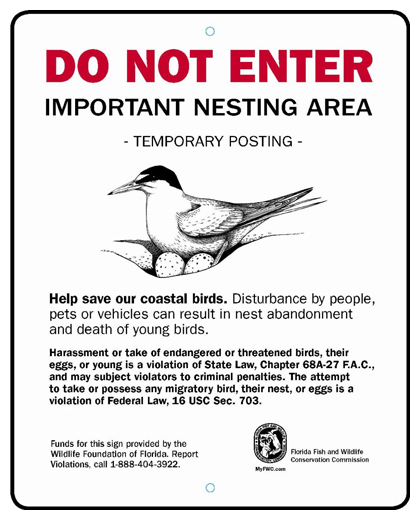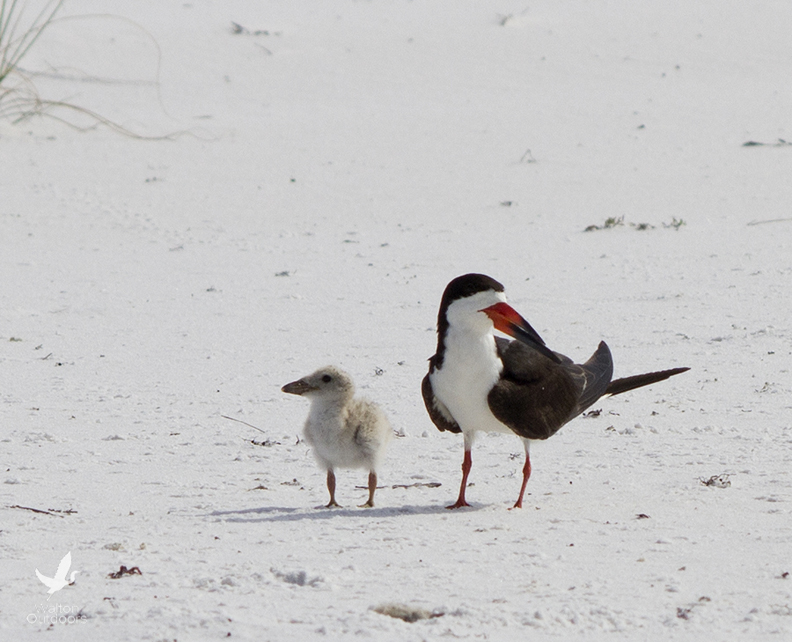Watch for nesting shorebirds this spring
As Florida’s residents and visitors venture out to the beaches, so do the state’s abundant and unique shorebirds. But there’s a big difference between the two beachcombers in Florida.
Shorebirds depend on those narrow stretches of sand to survive, not only in the short term, but to survive as a species. Without the proper nesting sites and feeding habitat, the number of shorebird species may decline. Some species’ numbers are already stressed, so accidentally disturbing their nesting sites would be particularly harmful.
The Florida Fish and Wildlife Conservation Commission (FWC) urges all beachgoers to be on the lookout for nesting shorebirds and give them plenty of space to perpetuate their species.
“In the next few weeks, our biologists and volunteers will be posting signs and putting up temporary fencing on Florida’s beaches to help protect shorebirds,” said Nancy Douglass, an FWC nongame biologist. “Beachgoers can do their part by staying out of the posted areas and either leaving dogs at home or keeping them on leashes away from those posted areas. And please don’t let dogs chase the birds.”

Any disturbance by people, pets or vehicles can result in shorebirds abandoning their nests and the death of young birds. Many of Florida’s shorebirds are either threatened or endangered, and it is a violation of state and federal laws to harass or take any endangered or threatened birds, their eggs or young.
With the help of volunteers, FWC biologists manage these areas to maximize nesting success for these species, which include the least tern, black skimmer, American oystercatcher, snowy plover and Wilson’s plover. Nesting areas will be closed off with “symbolic fencing,” which consists of signs connected by twine and marked with flagging. These closed areas protect the nesting birds from unnecessary disturbances and protect their nests from people who might accidentally step on them. All of these species nest in the open and lay their well-camouflaged eggs directly on the sand, making them nearly invisible to predators and to the untrained human eye.
The closed areas on the beaches may change or shift throughout the nesting season, depending on where the birds have chosen to nest at any given time.
If you would like more information about Florida’s shorebirds, go to the “Living with Wildlife” area under MyFWC.com/Wildlife, and download the “Co-existing with Florida’s beach-nesting birds” brochure.
Interested in volunteering with Audubon to monitor nesting shorebirds in the Florida Panhandle? Contract volunteer bird stewards are needed to help protect chicks. To learn more, folks can email bsamuelsen@audubon.org.

